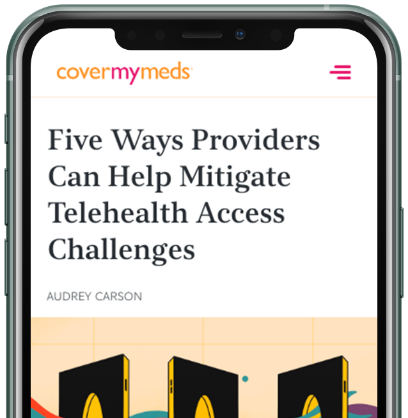Social Determinants of Patient Healthcare Choice

What brings you in today?
What medications are you currently taking?
When was your last physical?
Answers to these and other typical questions during a medical appointment can help lead to a diagnosis. But answers to questions left unasked could be key in finding the right treatment plan for the patient.
How did you get here today?
How do you feel about the price of this medication?
Where do you work?
Beyond health history, many social variables can affect a patient’s health future: family makeup, employment status, familiarity with technology, access to transportation, socioeconomic status, to name a few. While both the physician and patient can agree on one goal – getting the patient healthy – there can be several paths to reaching this goal. The best path may vary, depending on the patient’s current life circumstances.
Social determinants of health are identified by the U.S. Department of Health and Human Services as “conditions in the environments in which people are born, live, learn, work, play, worship, and age that affect a wide range of health, functioning, and quality-of-life outcomes and risks.”
These determinants create patients’ daily environments and lay the foundation for what resources are available to them. In the context of medication access, this can mean transportation to a preferred pharmacy, access to coupons and vouchers and even public safety measures and additional factors that affect whether or not a medication is affordable.
While questions surrounding social determinants of health may not be on patient intake forms, providers can still initiate these conversations. Prescription decision support solutions for the care team, including real-time benefit check (RTBC), as well as patient-facing tools surface medication and benefit information and put a valuable resource in patients’ hands: options.
In a CoverMyMeds survey, 86 percent of providers stated a reliable RTBC solution would benefit their patients and assist them in making more informed decisions when it comes to treatment https://www.covermymeds.com/main/insights/rtbc-scorecard/. While a prescriber may select a particular drug for two patients with the same diagnosis, each patient likely comes from a different financial, educational, social and societal background than the other, affecting how they might pay for and access the drug. Instead of writing a prescription and sending patients out the door, providers can lay out options – and even drug alternatives in some cases – that best suit the individual patient.
Cutting-edge patient tools can also address the social determinants of patient transportation and location. These tools can reveal drug pricing information by location so patients can choose the most convenient pick-up location for them – on the way to work or on a particular bus route, for instance – while revealing a competitive price.
These solutions provide the patient with more autonomy in their health, balancing the decision-making between the informed physician and the patient who knows their body and situation best.
Patients may have a good reason for preferring one treatment path over another, and research shows most prefer at least some say in treatment decision-making Do people want to be autonomous patients? Preferred roles in treatment decision-making in several patient populations. While physicians may suggest a certain medication or route over another, the person affected by both the medication and the cost of it is the patient. Through prescription decision support technology, providers can lay out the various paths to treatment for patients so they can influence the best course for their lifestyle.
Read more about what’s influencing patient decisions and how technology can advance the process.
The latest healthcare insights, floated right to your inbox.



